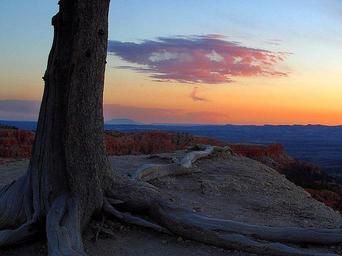Introduction: The Intersection of Mindfulness and Photography
In an increasingly busy world where diversions abound, the practice of mindfulness has actually become a crucial tool for preserving psychological wellness. Mindfulness encourages people to engage with their thoughts and surroundings in a non-judgmental manner, cultivating greater awareness and existence. But what takes place when we combine these principles with the art of photography? Go into contemplative photography-- a practice that not just improves our photographic abilities but also deepens our mindfulness journey. This article delves into why contemplative photography is vital for mindfulness practitioners, exploring its subtleties, benefits, and techniques.
What is Contemplative Photography?
At its core, contemplative photography has to do with decreasing and observing the world with objective. It welcomes professional photographers to engage deeply with their subjects, seeing not simply with their eyes however also through a lens of curiosity and mindfulness.
The Essence of Contemplation in Photography
Contemplation includes thoughtful observation-- stopping briefly to reflect on what you see rather than hastily capturing images. How does this shift impact photography? It changes an easy act into a profound exploration of the self and environment.
The Function of Intent in Recording Images
When participating in contemplative photography, objective is critical. Photographers are encouraged to ask themselves concerns like: What draws my attention? What feelings emerge when I observe this scene? This mindful technique causes more meaningful photographs that resonate on a psychological level.
Why Is Contemplative Photography Important for Mindfulness Practitioners?
Enhancing Awareness Through Observation
For mindfulness specialists, developing awareness is key. By practicing contemplative photography, people find out to slow down and genuinely observe their surroundings. This increased awareness can equate into other areas of life.

Fostering Connection with the Environment
Contemplative photography encourages a deeper connection with nature and metropolitan settings alike. As specialists capture images, they form bonds with their environment, resulting in higher appreciation and look after it.

Encouraging Self-Reflection Through Imagery
Photography often serves as a mirror reflecting our inner thoughts and sensations. Engaging in self-portrait photography or producing photos that represent individual experiences permits practitioners to explore their identities further.
Techniques in Contemplative Photography
Incorporating strategies such as mindfulness meditation before shooting can significantly boost one's experience in contemplative photography.
Mindful Preparation: Setting the Scene for Creativity
Quieting the Mind: Take a couple of moments to breathe deeply and clear your thoughts. Setting Objectives: Before going out or setting up your electronic camera, think of what you intend to capture. Embracing Impermanence: Understand that each moment is distinct; be open to spontaneity while shooting.The Art of Composition: Framing Your World Mindfully
Rule of Thirds: Utilize this traditional concept to produce balanced compositions. Leading Lines: Direct audiences' eyes through your image using natural lines present in your surroundings. Negative Area: Enable areas without topic to breathe within your frame, improving focus on your main subject.The Advantages of Aesthetic Self-Portrait Photography for Mindfulness Practitioners
Self-portraiture can be exceptionally empowering for mindfulness specialists looking for self-questioning through visual expression.
Exploring Identity Through Faceless Self-Portraits
Faceless self-portraits eliminate the focus from physical functions, enabling individuals to explore identity beyond look-- inviting audiences into a narrative http://openreflections888.lowescouponn.com/creative-decor-for-apartments-making-small-spaces-shine driven by emotion instead of looks.
Creating Aesthetic Photos That Speak Volumes
Using visual aspects in self-portraiture makes it possible for the artist to interact intricate sensations without words, developing images that resonate with audiences on numerous levels.
Fine Art Self-Portrait Photography as a Medium for Expression
Fine art self-portrait photography provides unique opportunities for innovative expression rooted in individual narratives.

Transcending Traditional Portraiture Techniques
Unlike standard picture approaches concentrated on realism, fine art techniques enable creativity without borders-- encouraging experimentation with surrealism or abstract principles that challenge perceptions.
Crafting Visual Stories Through Visual Pictures
Every photograph narrates; comprehending how to craft narratives through images includes depth and suggesting to both the production procedure and viewer engagement.
FAQs About Reflective Photography
1. What are some tips for newbies interested in reflective photography?
Start by observing your environment mindfully before trying any shots; take some time to notice colors, shapes, and light variations before reaching for your camera.
2. How can I guarantee my self-portraits reflect my real self?
Take time during strive reflection; consider journaling about feelings or ideas you want each picture encapsulates before shooting them.
3. Can contemplative photography help in reducing stress?
Absolutely! The deliberate act of photographing mindfully fosters relaxation by anchoring attention away from stress factors toward creative exploration instead.
4. What's the difference between conventional portraiture and aesthetic self-portrait photography?
Traditional portraiture normally concentrates on recording similarities accurately while aesthetic self-portraits highlight mood & & feeling over simple representation-- permitting flexibility from traditional constraints!
5. How does vintage aesthetic photography fit into contemplative practices?
Vintage aesthetic appeals evoke nostalgia which frequently develops emotional connections-- heightening one's ability to link personally throughout contemplation sessions behind the lens!
6. Exist specific styles or subjects much better fit for contemplative photography?
There's no right or incorrect answer! Nevertheless themes such as nature scenes or quiet moments within daily life typically lend themselves magnificently towards contemplation due their fundamental simplicity & & beauty!
Conclusion: Embracing Conscious Minutes Through Contemplative Photography
In conclusion, the crossway in between mindfulness practices and contemplative photography enhances our lives significantly-- the act itself becomes both meditative & empowering! By embracing this special approach towards visual storytelling-- specialists not just cultivate higher awareness however also develop significant connections with themselves & their environments alike! Whether you're taking part in art or aesthetic self-portrait photography-- each click records fragments of our journey through life's stunning tapestry! So why wait? Get your camera today & start exploring all that waits for behind each frame-- all while nurturing conscious minutes along the way!
This post has taken you through various aspects surrounding" Why Contemplative Photography is Necessary for Mindfulness Practitioners."From comprehending its core concepts to useful strategies you can execute-- it's evident how transformative this practice can be! Delighted shooting!